Dark Age APOCALYPSE: Game Play and Review
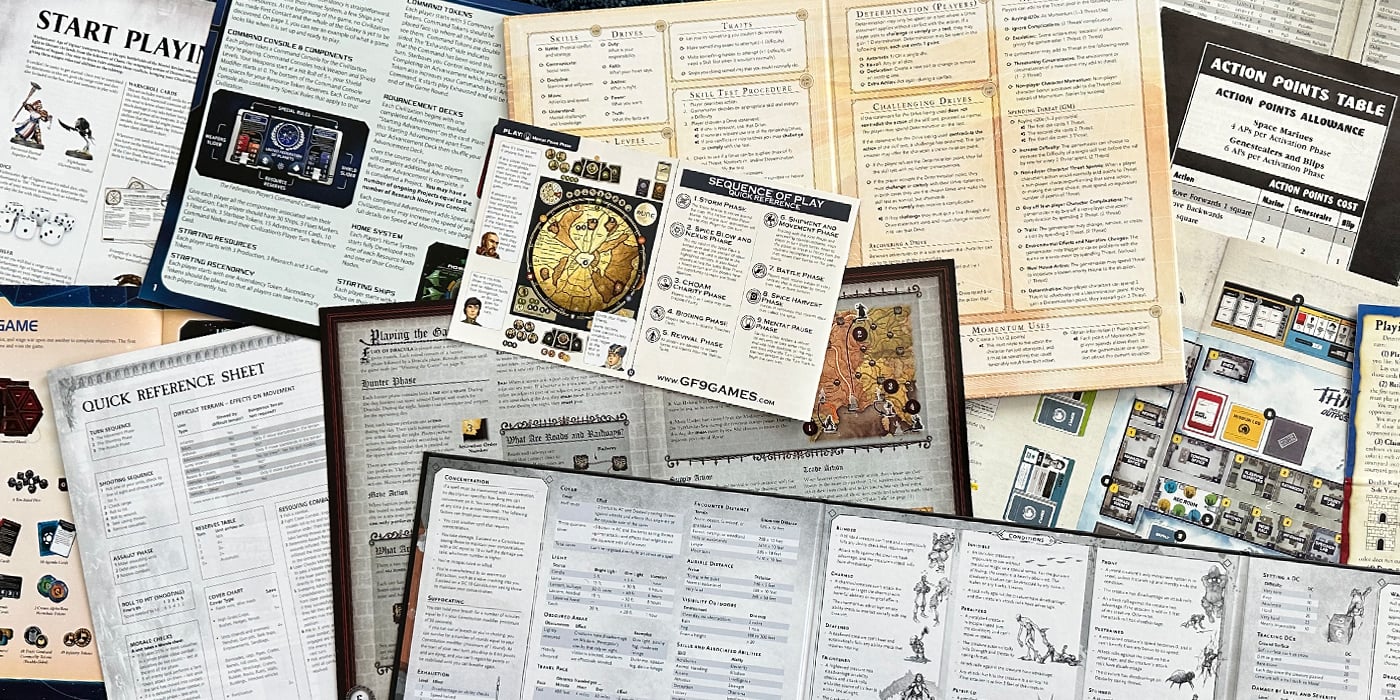
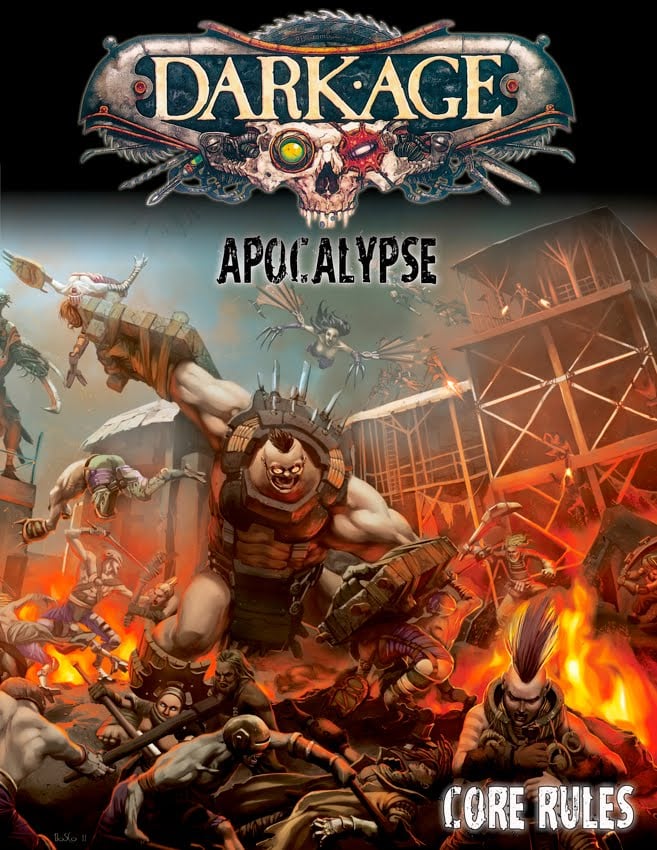
So you’ve already gotten a brief tour of Samaria; the setting for Dark Age. Here’s a quick look at the rules of the game.
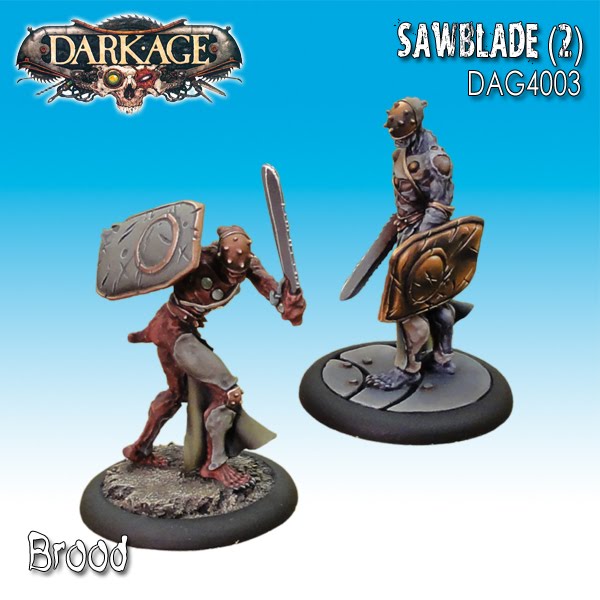
Dark Age has an alternating activation turn sequence. One player activates an individual or a unit, then the other player does the same. It is is essentially a skirmish style game, though army sizes can vary wildly. At 500 points, which is a pretty small game, an army could be composed of less than five or more than 40 models. It’s probably a terrible idea to go to either extreme though. A good balance of elite troops and cheap filler seems to be the best way to go. While 1500 points is the largest army size listed in the rules, I suppose there’s nothing to stop you from scaling it as high as you like. The most expensive model in the game weighs in at 200 points, while the least expensive is 10. Your army will consist of squads of troopers that must maintain coherency, and individuals that fight on their own. Certain elite squads can have a minimum size of one model.
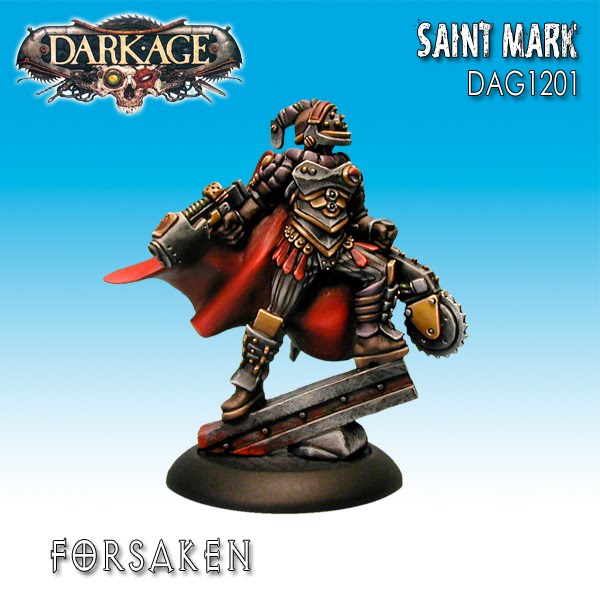
When building an army, the models you have to choose from vary depending on which Forcelist you choose. While the faction you choose to play will dictate the generic troops available to you, the Forcelist you choose will give you access to more rare, typically elite models. In essence, Forcelists, are like factions within factions. So if you want to play Forsaken and take a force led by Saint Mary, just by choosing that one named model you have begun your Saint Mary Forcelist. This means you can take any generic Forsaken, and also Flenses, Contradictions, and Clergy Anns. But even though a Sister of Wrath is a Forsaken model, you can’t take one of them since they are only available to a Saint Luke Forcelist. You cannot take a second Forcelist until your army size exceeds 1,000 points. And even then the first 1,000 points must all be spent on the initial Forcelist. I don’t think I’ve ever seen a miniatures game with mandatory restrictions like this within factions.
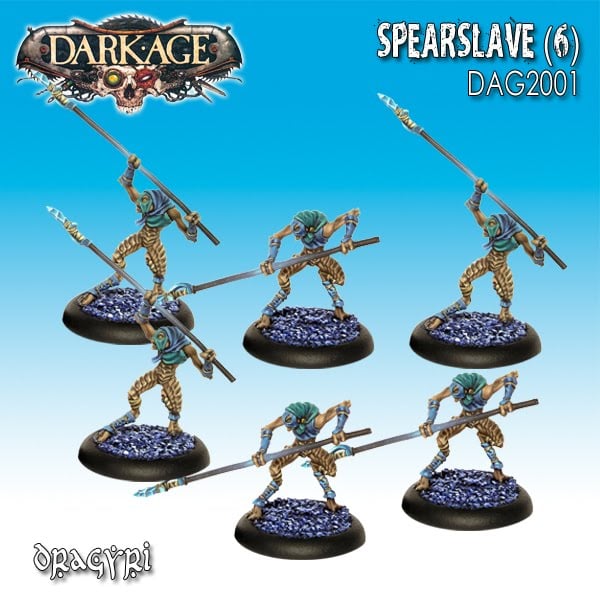
The model profiles in Dark Age should look familiar enough to anyone who has played a miniatures game before. Most of the standard stats are there. And all the minis come with stat cards for quick reference. What may be the most important stat in Dark Age is one that you don’t see in most other games: AP. Action Points are the number of times a model can perform any of the actions available to it. As an action a model can move, make a ranged or melee attack, or do something special like use a psychic ability. Clearly AP are something you want to have a lot of. Currently the highest AP value is 4; a value shared by the mightiest heroes and some of the more elite troops. Even the lowliest warriors have at least 2. To make things interesting, a model can “hold” its last 2 AP rather than spend them during its activation. It may then use them to interrupt an opponents activation and make a single ranged or melee attack. There’s no running in Dark Age; a model simply spends all its AP moving. Models with a high AP value frequently have lower movement values to keep them from scurrying across the entire battlefield. If you want to charge you just move into contact with another model, netting yourself a free attack with a bonus to the roll.
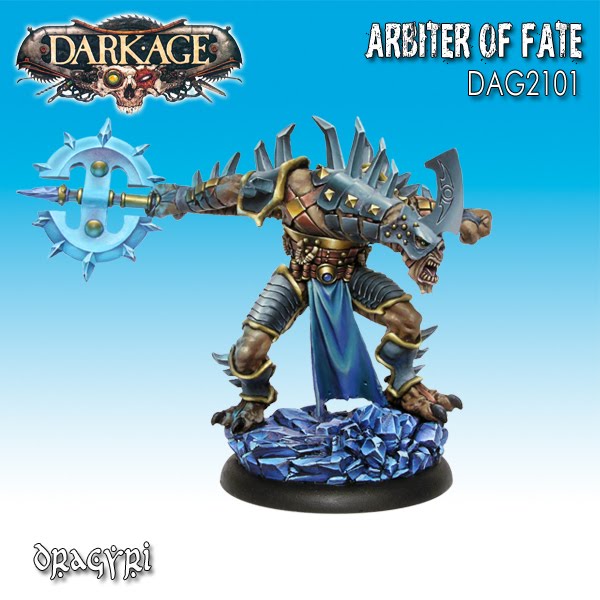
When you attack, whether at range or in melee, you choose what weapons you are going to use based off a model’s Attack Groups. Each attack group represents the use of a weapon or group of weapons, and will cost 1 AP to use. While most of the cheap rank and file models might only have one Attack Group more expensive choices will often have a few to choose from. Different Attack Groups will offer different options. One Attack Group might be a gun and the other a sword. Alternatively, a model might get to choose between a more accurate attack, a harder hitting attack, or an attack that does something else of strategic value like knocking a model prone. Certain attack groups may even give you the option of attacking multiple times.
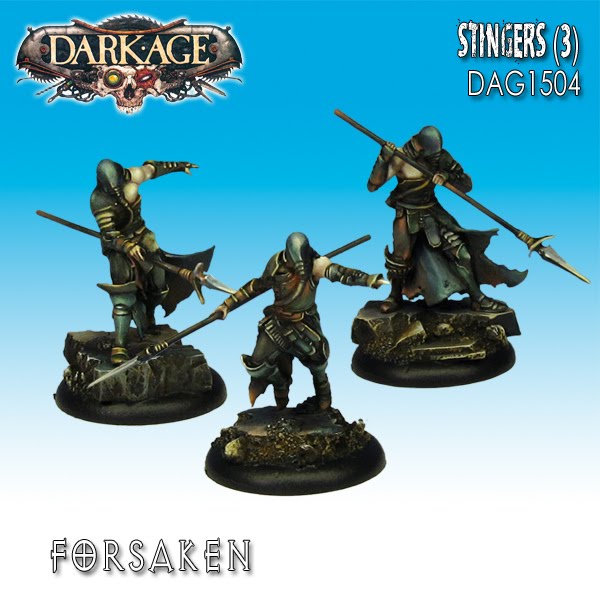
The most distinct thing about Dark Age is that all rolls are made with a D20. What also makes it different is that low rolls are good. In fact in Dark Age, if you roll a 1, you will net yourself a critical hit, and your attack will ignore your target’s armor. A roll of a 20 on the other hand will inflict you with a Critical Failure costing the attacking model an AP. Many weapons also risk malfunctioning and inflicting a hit on their user if too high a roll is made during an attack.
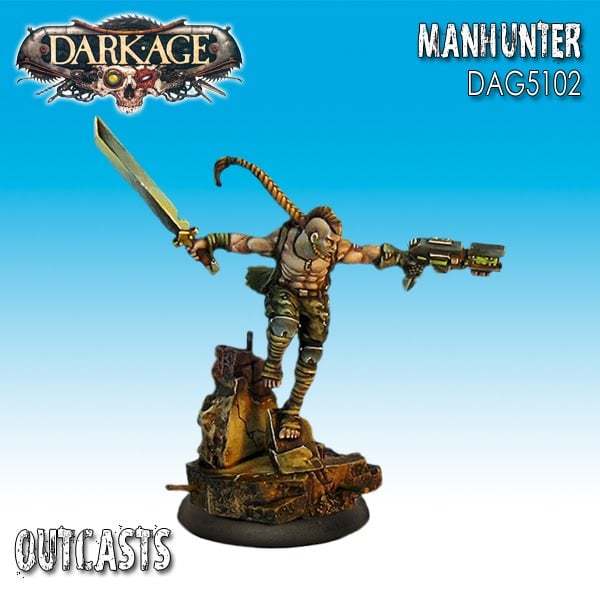
When rolling to attack, you add the Assault (AS) value of the attacking model’s chosen Attack Group to the defender’s Defense. This value is the Target Number (TN). The attacker must roll equal to or below the Target Number in order to inflict a hit. This means that in Dark Age a low defense stat is ideal. This takes just a bit of getting used to since higher numbers are ideal for every other stat in the game. If your attack is successful, the next step is to subtract the Power (PW) of the attacking weapon from the defender’s Armor (AR). Then the defender must try to roll below this value to avoid taking the damage. Certain weapons are dangerous enough that they may force their victims to pass two rolls to prevent the hit.
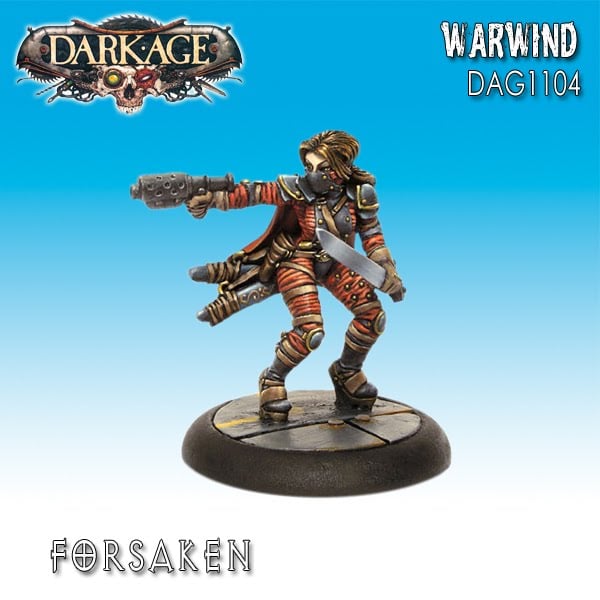
Both melee and ranged attacks are resolved using the above system. In melee, attackers get a +1 to both AS and PW for every other model in base to base with the target. Getting ganged-up on is bad. Ranged attacks on the other hand are somewhat innaccurate to represent the unpredictable nature of the improvised or ancient state of the weapons in this setting. There are the usual penalties for intervening terrain that you see in most miniatures games. In addition a shooter must also subtract 1 from a ranged attack’s Target Number for every full 4″ between them and their target. Fortunately you can spend an additional AP when making a ranged attack to get a bonus. A shooter must target the nearest enemy model when making ranged attacks, unless it can see a model that would incur fewer penalties to its attack roll. There are also weapons that can make Blast attacks which allow you to target a point on the battlefield and place a template if you can hit the ground’s low def score of 6. Then you’ve got Spray attacks that hit everyone under their triangular templates automatically. All ranged attacks have a Rate of Fire value that determines how many times they can be shot per turn. Most of the time this value is a 1, so having 4 AP does not mean a model gets to shoot 4 times in its turn.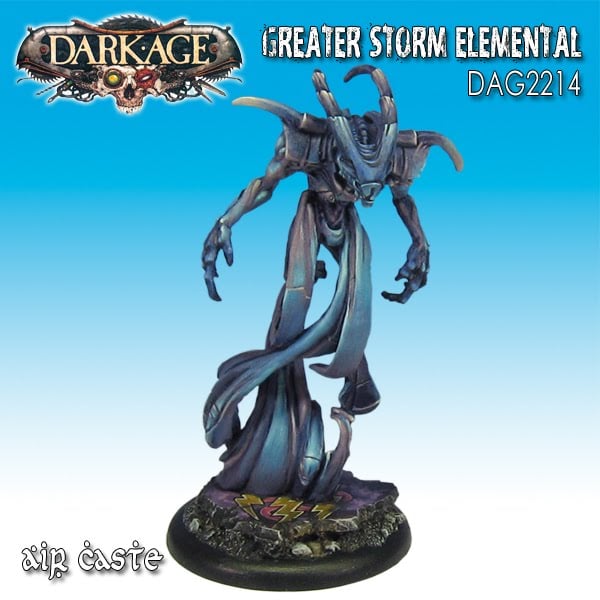
Casting is the catch all term to describe more supernatural attacks like Dragyri Foci or Skarrd Psychogenics. In order for certain castings to be successful you need merely roll against the set difficulty of your chosen ability. In these situations your Target Number is the ability’s difficulty subtracted from the caster’s Psyche (the catch all stat for courage, willpower and the like). Certain Castings are offensive in nature and are resolved almost exactly like shooting attacks with the Psyche value used in place of Assault. However here there is also the added complication of the base difficulty of the ability needing to be subtracted from the Psyche before all the other range and cover modifiers are calculated.
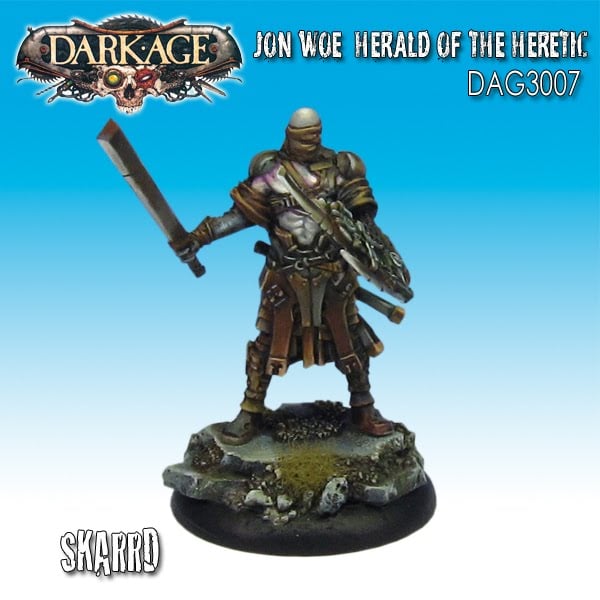
In addition to the core rules, all but the most expendable of models have some special rules. This means each piece has a lot more tactical depth than just their stats profile. These abilities might make them fight better or make them harder to kill. And since Dark Age is an alternating activation game, there are also some cool abilities that can let you mess with the activation sequence.
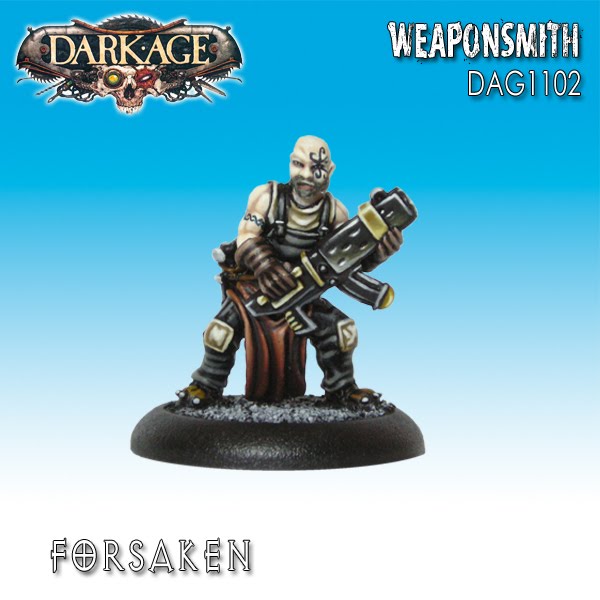
So now it’s time to reveal my personal thoughts. For me, a minis game is foremost about the minis, and Dark Age has some absolutely fantastic ones. So far I’ve only been posting up my favorites. But the game has been around for awhile and some of the sculpts are really beginning to show their age. Some, like most of the Dragyri, have aged quite well. But then there are the ones like the Firestorms below that really aren’t up to par with the stuff most companies (including Dark Age Games) release today. Fortunately they’ve done a few resculpts here and there over the years so these may be re-imagined before too long.
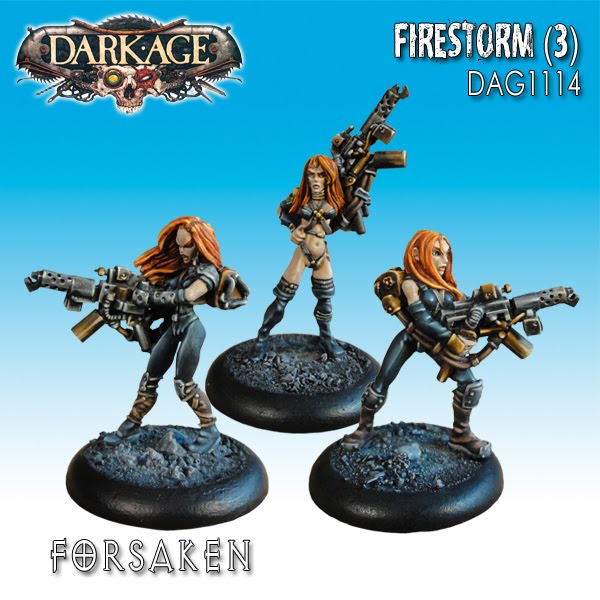 Others, like these Skarrd Harpies, are sculpted well enough. But they seem to cater to somewhat extreme tastes.
Others, like these Skarrd Harpies, are sculpted well enough. But they seem to cater to somewhat extreme tastes.
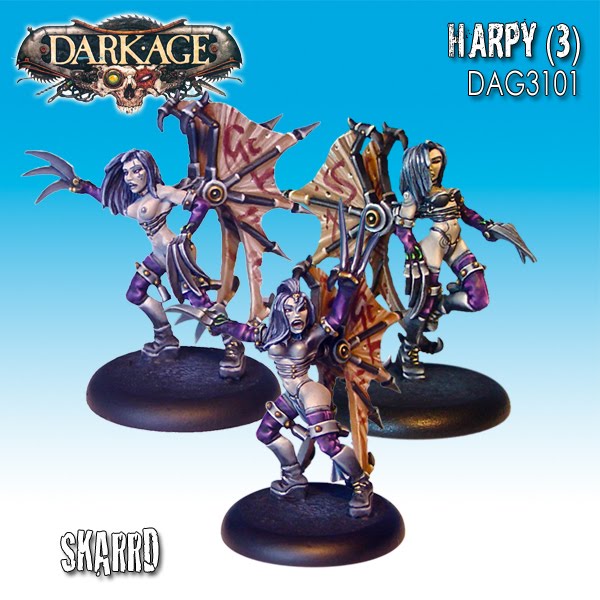
As far as the books go they are both rather nice looking tomes. The $19.99 price tag on the Rulebook is quite reasonable for a hardcover of this quality. It’s got a lot of great photos of the minis throughout. It’s also fairly clear and well organized. As you can tell from my explanations I was able to figure it out well enough. But it’s not without its share of typos. Overall these are fairly minor. And Dark Age has a fairly active forum. So if there is a typo that you just can’t wrap your head around, the owner of the company posts there frequently to answer people’s questions.
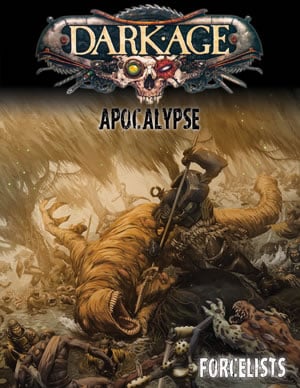
The Forcelists book is where you’ll find the stats and profiles for every model released for Dark Age thus far – and some that don’t exist yet. Its 356 pages are loaded with cool art, a great miniatures gallery, and detailed information on the Dark Age setting. Samaria is a very interesting setting that is full of depth and history. Unfortunately the book is far from perfect. While the typos from the Rulebook were annoying, they’ve got nothing on those in Forcelists. Run-on sentences are the biggest offenders. It’s hard to find a page without at least one of them. You also see formatting errors like improperly inserted returns. While most of these issues are minor they are common. And once you start noticing them they seem to become difficult to overlook.
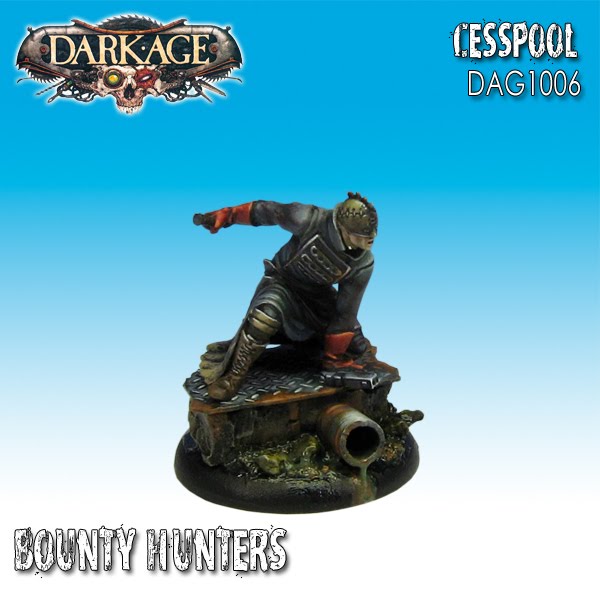
In addition, the general writing quality of the different sections of this book is uneven. While the unit entries were robust, I almost gave up reading some of the stories. Several of them read like they were hastily written and edited. Then there was the expository piece in the Brood section which was completely devoid of punctuation. While this might have been appropriate for a piece written from the point of view of one of the Brood’s weird monsters, it was a bit jarring. Of course, all things being subjective, it might end up being someone else’s favorite.
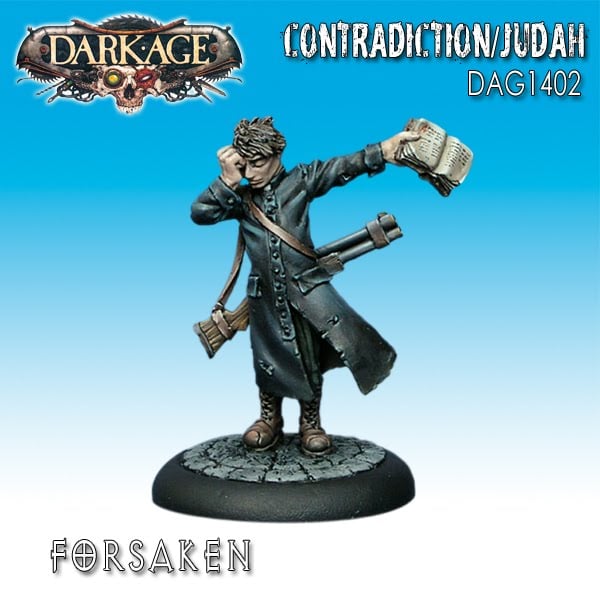
While I accept that Forcelists is not intended as a work of fine literature these errors are extensive enough that it would be negligent of me not to point them out. Most of what you’re paying for in this book is the writing. That being the case I think more time should have been spent ensuring its quality. The real tragedy is that a lot of love and care was obviously put into the other aspects of this product. The content is interesting enough that it pains me to see such flaws in its delivery. Minus the typos the Forcelists book is big and attractive enough that even with a $40 price tag it would be a pretty good deal.
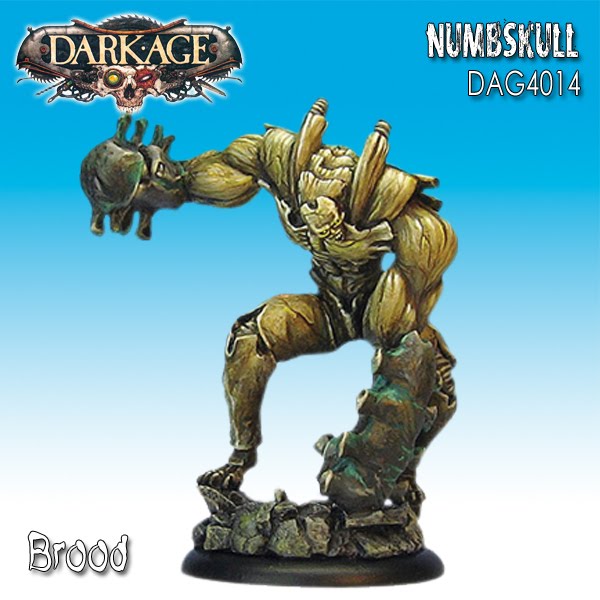
Fortunately there’s almost nothing in Forcelists that you can’t get by without. While the rulebook may not list all the model special abilities you can download them for free here. And all the model profiles are available for download as well. They’re even organized by Forcelist. That only leaves a few rules for army building that I can’t find online. And these are minor enough that if you have a friend with Forcelists to help you out you should be OK. Or you could ask about your chosen Forcelist in the Dark Age forums to see if it has any special rules you should be aware of.
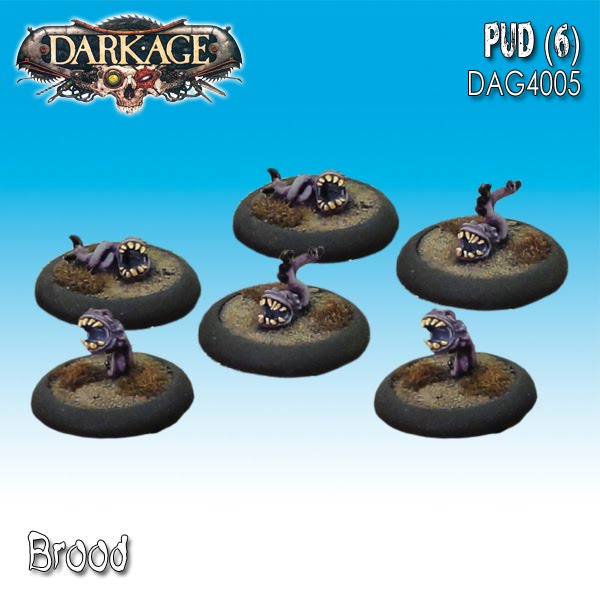 If you like the minis and you liked the setting, I’d still encourage you to check it out. This game has been around for a long time now and it has a pretty dedicated fan base. There are a lot of people who absolutely love Dark Age. And if they love it so much it must have something great going for it.
If you like the minis and you liked the setting, I’d still encourage you to check it out. This game has been around for a long time now and it has a pretty dedicated fan base. There are a lot of people who absolutely love Dark Age. And if they love it so much it must have something great going for it.
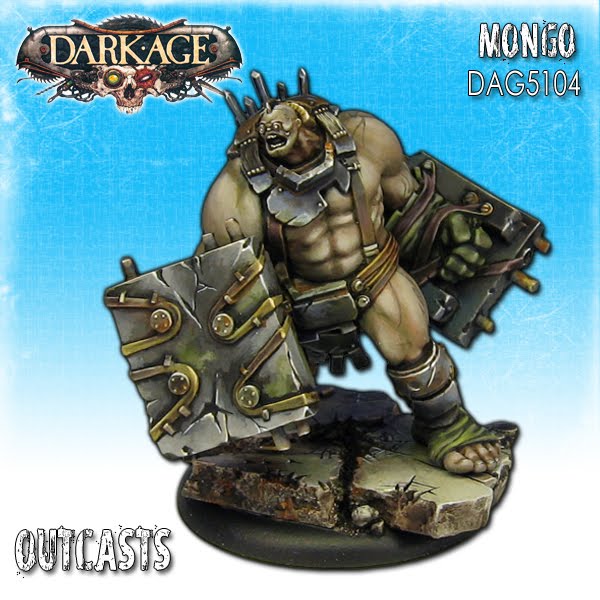
~Hopefully you Dark Age fans I saw posting in the Samaria Background thread won’t be too offended by my criticism. But I feel very strongly that the problems I saw had to be pointed out. If you’ve read these books, and you think I’m just full of hot air I want to hear about it in the comments. For everyone else, I still recommend checking out the Dark Age Games Website. In addition to the links I’ve already been posting they’ve got a gallery for each faction, and quickstart rules. And if you’ve made it this far go check out the forum so you can see what the players are saying.




